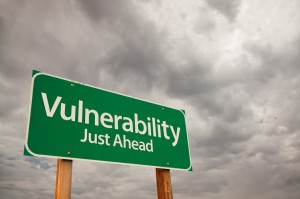As is. Behind the fear,
Vulnerability. Behind that,
Sadness, then compassion
And behind that the vast sky.
~ ~ ~ ~Rick Fields
We had the second meeting of our Living Beautifully Meditation Book Group at Yoga Bliss yesterday. We came together for gentle yoga practice, meditation and discussion of the second section in Living Beautifully about taking the 1st Commitment, To Not Cause Harm. It’s also called the Pratimoksha Vow of personal liberation. At the very heart of this commitment, the price of freedom, is our willingness to see ourselves clearly enough to know when we’re about to speak or act in ways that may be harmful to our selves and others. These teachings challenge us not only to refrain from outward actions but also to reflect on what is happening inside our bodies, hearts and minds. Easy right?
It’s fascinating to consider all the activities we use to fill up our time and space to avoid being present. I’ve become much more aware of how much time I spend in front of a screen: cell-phone, electronic book reader, desktop computer, TV. I’ll do anything to avoid cleaning my office. The challenge arises when we attempt to refrain from escaping – to be truly present by simply pausing for three conscious breaths or practicing formal meditation for ten or twenty minutes. Our “escape routes” often take the form of cravings, aggression or just withdrawn indifference.
The challenge is heightened when we’re engaged in a contentious relationship, when we have to deal with conflict, live! We explored a contemplation exercise that Pema recommends to become more aware of what happens when we’re in a charged situation:
Notice how you feel – what does your body feel like to have a craving or and aggressive urge
Notice your thinking – what sort of thoughts & feelings arise
Notice your actions – how do you treat yourself & others
Several people chose to work with real situations in their lives. No one seemed to come to a sense of resolution yet all appeared to learn from the opportunity to reflect. We discussed the fact that this takes time, time we don’t often have in the heat of the moment. One person asked why not? Why don’t we give ourselves this time? How often could we acknowledge another person and ask for time to reflect? Is this another from of avoiding or are we working with our inner world of thoughts and emotions in order to refrain from reacting harmfully? Perhaps only we can know.
Pema stresses that this practice is one of refraining and not repressing. It’s all about gaining clarity of mind, speech and actions as opposed to judging ourselves good or bad. She says a transformative process begins at a deeper level when we’re left with the rawness or vulnerability when we refrain from reacting or escaping into habit. I think of this as a form of yoga. We stay with the present experience of breath, movement and stillness. Pema says that every time we practice, when we embrace the totality of our experience, we have the opportunity to develop a kindhearted tolerance for pain and we build inner strength. She says having loving kindness for one self is not about making sure we feel good all the time. It’s about giving our selves time for meditation, self-reflection and kind hearted honesty.
Pema describes the Buddhist teaching on the Eight Worldly Concerns which describe the predicaments of our human condition. Who hasn’t struggled with pleasure & pain; gain & loss; fame & disgrace; praise & blame? She encourages us to become more aware of how these concerns operate in our lives. Does the energy I devote toward seeking pleasure and avoiding pain, trying to win and not lose, building and protecting a “good” reputation, looking for compliments and turning away from criticism create more suffering?
She answers this question with a quote from Steve Jobs which, in part, says “. . . almost everything – all external expectations, all pride, all fear of embarrassment or failure – these things just fall away in the face of death, leaving only what is truly important. . . . You are already naked. There is no reason not to follow your heart.” I resonate with this encouragement after spending time with friends and family members in both the birthing and the dying processes. Both experiences take us into our most vulnerable places – where we are no longer building ourselves up but letting go. It’s interesting that Pema says that this is one definition of enlightenment.
It’s good to remember that we don’t have to do this alone. We can be present for our selves and each other.
You can find this week’s homework and other resources at:
Living Beautifully Meditation Book Group Meeting 2 Homework
Thank you for your willingness to explore and for giving me the support to look more deeply.
Namaste!

